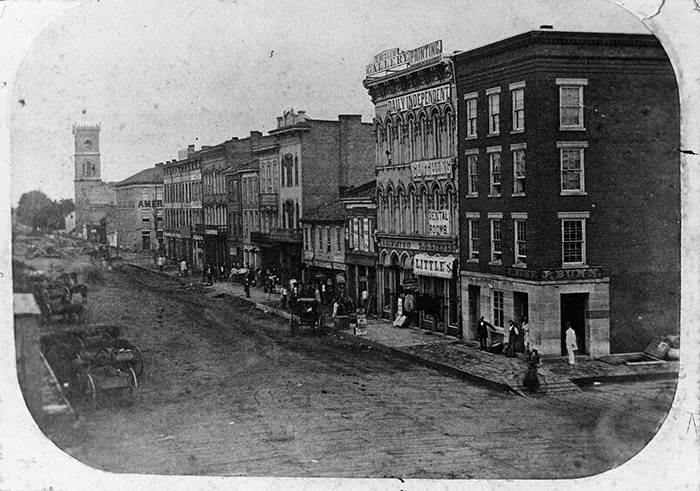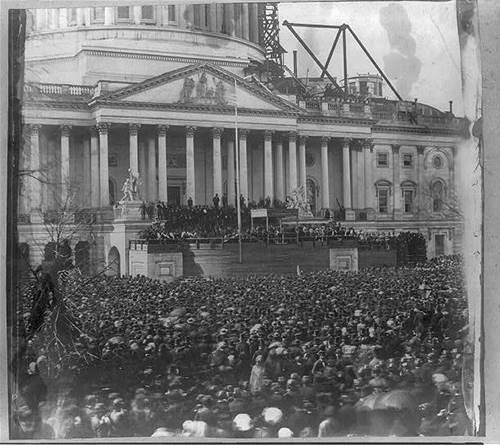By Christian McWhirter
The presidential election of 1860 was the most controversial in American history. Today, we are used to regarding Abraham Lincoln as almost universally beloved, but that was far from true in his own time. Many Americans viewed his new Republican Party — devoted to free labor ideology and the destruction of slavery — as dangerously radical and progressive.
Lincoln was moderate by Republican standards, but many white Southerners nevertheless viewed him and his party as abolitionist, providing fuel for the long-gestating secession movement. Northern Democrats similarly considered Lincoln and the Republicans needlessly antagonistic to white Southerners and a danger to American union.
The president-elect knew all this and chose to watch in silence as Deep South states began to declare their independence in December 1860. He fiercely opposed secession on both constitutional and practical grounds — believing it was not only illegal but poor policy built on misinformation about his party’s platform. He also, however, believed anything he said could potentially worsen the crisis. So, Lincoln waited for his upcoming inauguration on March 4, 1861, to make a definitive statement about the intentions of his administration and the faulty logic of secession.
But many Americans were not content to let Lincoln keep such a low profile. He was, after all, about to become the most powerful man in the nation while also relatively unknown. Reporters, politicians, and even foreign dignitaries descended on Springfield to meet Lincoln and discover his plan for dealing with secession. Lincoln continued to keep his intentions secret but also soon found these myriad visitors were a constant nuisance. On the verge of striding into the center of the greatest crisis the United States had ever faced, the president-elect rarely found the time or privacy to craft a response.
 The south side of Springfield’s capitol square around the time of Lincoln’s election. (ALPLM)
The south side of Springfield’s capitol square around the time of Lincoln’s election. (ALPLM)
Fortunately for Lincoln, Springfield was full of friends and relatives ready to help. One such person was his brother-in-law Clark M. Smith, who owned a store on the south side of the capitol square. Its third floor was quiet and secluded, and the back entrance allowed Lincoln to come and go unseen. There at Smith’s merchant’s desk, using Smith’s inkwell, Lincoln began crafting the most important speech of his career. He wouldn’t complete it until just before his inauguration — even misplacing it at least once during the journey to Washington due to his son Robert’s absentmindedness — but we can assume the core of its argument developed in that third-floor room.
Smith’s store was triply convenient because of its proximity to the Illinois Capitol’s legal library. Lincoln’s First Inaugural Address is mostly remembered for its appeal to white Southerners’ shared national memory and identity — "the mystic chords of memory” — but those sentiments only occupy the last two paragraphs. Through most of the long speech, Lincoln the sage takes a back seat to Lincoln the lawyer, who makes a measured and convincing argument against secession with ideas likely shaped in Springfield by the books he consulted.
 The desk and inkwell Lincoln used to write the First Inaugural Address. (ALPLM)
The desk and inkwell Lincoln used to write the First Inaugural Address. (ALPLM)
And it’s in those arguments that we see the president-elect most clearly. Lincoln is often depicted as a unifying figure—keeping the nation together at a critical time. This is of course true, but it’s clear from his actions and words that he did not believe in union for union’s sake. The Union and its constitution were, in Lincoln’s eyes, the best vehicles for preserving America’s fragile and isolated democracy. That democracy, in turn, could only be preserved through the sanctity of elections and commitment to the rule of law. With those in place, politicians and the people they represented could skillfully use the tools of government to create positive change. Secession and slavery put all those things at risk not just in North America but across the globe, making America “the last best hope” Lincoln would reference two-and-a-half years later at Gettysburg.
But, while Lincoln argues secession is antithetical to democracy — “the essence of anarchy” — he also takes a more conciliatory stance regarding slavery. The speech famously closes with an appeal to “the better angels of our nature,” but it less-famously opens with an assurance to white Southerners:
Apprehension seems to exist among the people of the Southern States, that by the accession of a Republican Administration, their property [meaning enslaved people], and their peace, and personal security, are to be endangered. There has never been any reasonable cause for such apprehension. Indeed, the most ample evidence to the contrary has all the while existed, and been open to their inspection. It is found in nearly all the published speeches of him who now addresses you.
This reflects the other side of Lincoln’s commitment to the rule of law. While secession was clearly illegal in Lincoln’s eyes, slavery was not. A close reading of Lincoln’s writings and speeches shows he would have preferred otherwise, and the Republican Party shared a near consensus that slavery should be outlawed. Yet Lincoln was also committed to only doing so through the levers of power available to him, and he did not believe the office of the president provided those levers.
 The crowd gathers at the U.S. Capitol for Abraham Lincoln to deliver his First Inaugural Address from beneath the canopy in the center. Courtesy of the Library of Congress.
The crowd gathers at the U.S. Capitol for Abraham Lincoln to deliver his First Inaugural Address from beneath the canopy in the center. Courtesy of the Library of Congress.
Thus, it would take over a year, intense resistance from the insurgent Confederacy, and inspiration from African Americans and their allies before Lincoln would consider using his powers as commander in chief to issue a proclamation permanently freeing all enslaved people in areas under rebellion. By the time of Lincoln’s assassination, the Confederate government was collapsing, and a constitutional amendment was making its way through the states to finally eliminate American slavery. One could argue that process began in Smith’s third-floor office, but it also had a long way to go.
The inkwell and desk Lincoln used to write his First Inaugural Address are both part of the Abraham Lincoln Presidential Library and Museum’s collection. The inkwell will be on display in “Journey 1” of the museum beginning this October.
Christian McWhirter is the ALPLM’s Lincoln Historian.